Sterling Korean War Us Navy Submarine Warfare Badge Enlisted Dolphins Meyer Inc
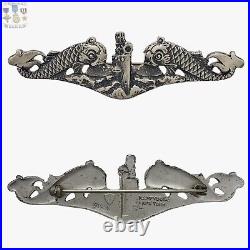
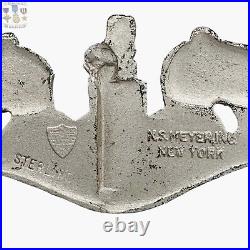
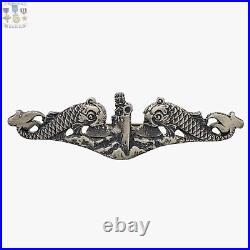
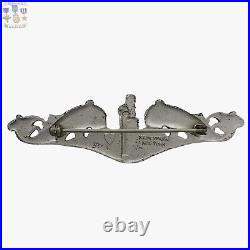
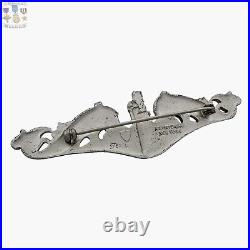
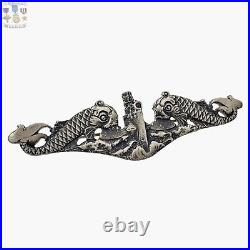

ORIGINAL (FULL SIZE) KOREAN WAR UNITED STATES NAVY SILVER ENLISTED SUBMARINE WARFARE DOLPHINS BADGE, PIN-BACK W/ LOCKING CATCH. On 13 June 1923, Captain Ernest J.
King, Commander, Submarine Division Three later Fleet Admiral and Commander in Chief, U. Fleet, during World War II, suggested to the Secretary of the Navy (Bureau of Navigation) that a distinguishing device for qualified submariners be adopted. He submitted a pen-and-ink sketch of his own showing a shield mounted on the beam ends of a submarine, with dolphins forward of, and abaft, the conning tower. The suggestion was strongly endorsed by Commander Submarine Division Atlantic. Over the next several months the Bureau of Navigation (now known as BUPERS) solicited additional designs from several sources.
Some combined a submarine with a shark motif. Others showed submarines and dolphins, and still others used a shield design. A Philadelphia firm, which had done work for the Navy in the field of United States Naval Academy class rings, was approached by the Bureau of Navigation with the request that it design a suitable badge. Two designs were submitted by the firm, but these were ultimately combined into a single design.It was a bow view of a submarine, proceeding on the surface, with bow planes rigged for diving, flanked by dolphins (in the form of artistically stylized heraldic dolphins), in a horizontal position with their heads resting on the upper edge of the bow planes. Today a similar design is used: a dolphin flanking the bow and conning tower of a submarine. On 20 March 1924, the Chief of the Bureau of Navigation recommended to the Secretary of the Navy that the design be adopted. The recommendation was accepted by Theodore Roosevelt Jr.
Acting Secretary of the Navy. Originally, the submarine insignia was to be worn by officers and men qualified in submarine duty only when attached to submarine units or submarine command organizations. The right to wear the pin was revoked if the service member transferred to a non-submarine billet.
In 1941 the Uniform Regulations were modified to permit a service member to wear the submarine insignia for the duration of his career, once so authorized. The officers' insignia was at first a bronze, gold-plated metal pin, worn centered above the left breast pocket and above the ribbons and medals. Enlisted men wore an embroidered insignia sewn on the outside of the right sleeve, midway between the wrist and elbow. The device was two and three-quarters inches long, embroidered in white silk for blue clothing and vice versa.
In 1943, the Uniform Regulations were modified to provide that. Enlisted men, who are qualified and subsequently promoted to commissioned or warrant ranks, may wear enlisted submarine insignia on the left breast until they qualify as submarine officers, at which time this insignia would be replaced by the officers' submarine pin. In mid-1947, the embroidered device shifted from the sleeve of the enlisted men's jumper to above the left breast pocket. A change to the Uniform Regulations dated 21 September 1950 authorized the embroidered insignia for officers (in addition to the pin-on insignia) and a bronze, silver-plated, pin-on insignia for enlisted men (in addition to the embroidered device).Please let me know if there's anything else I can do for you!
